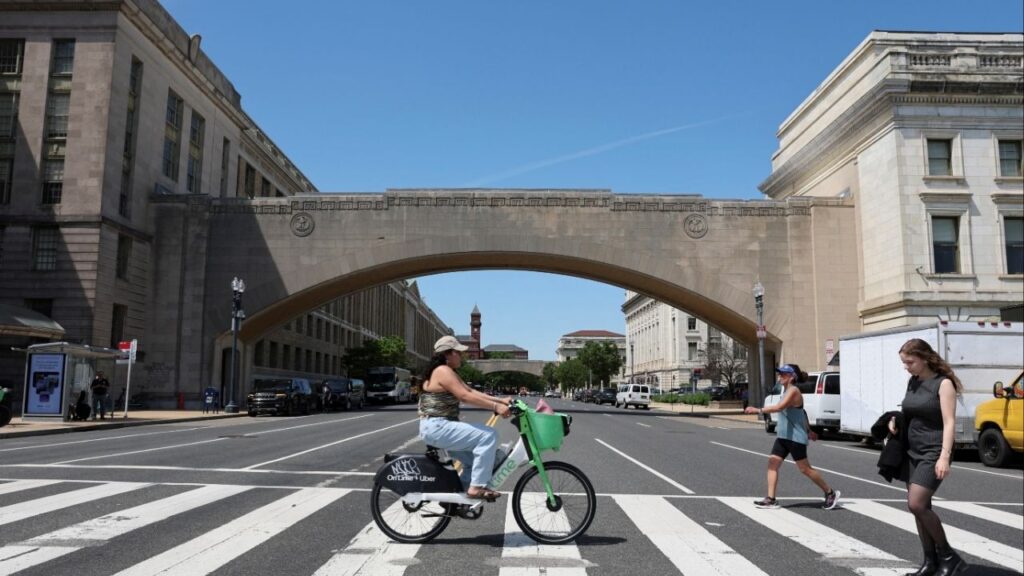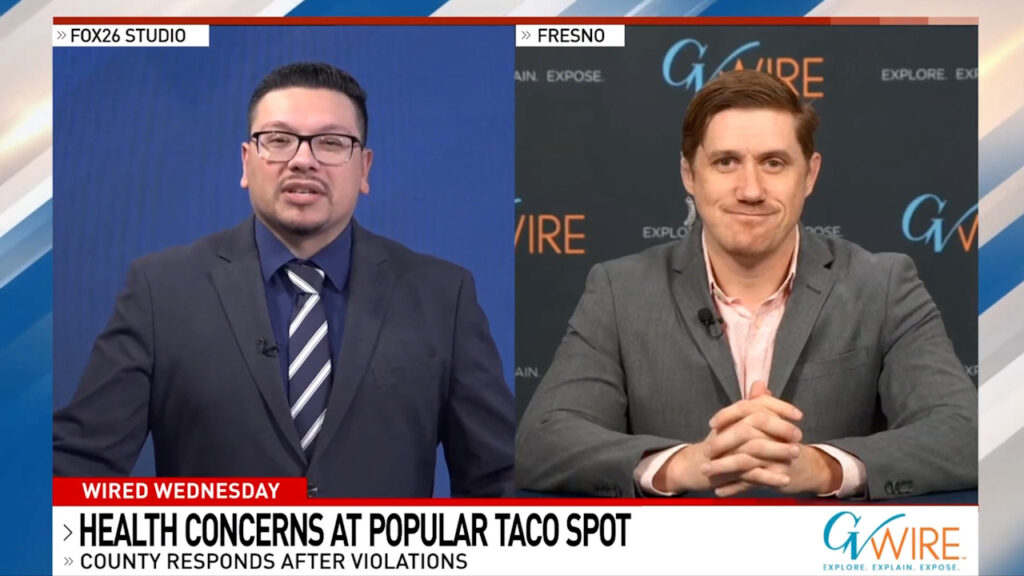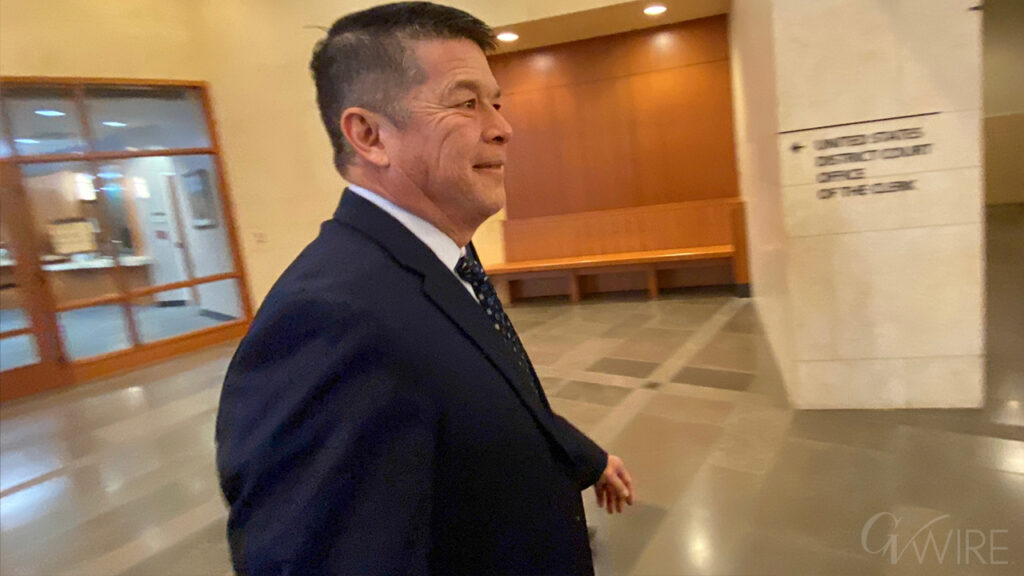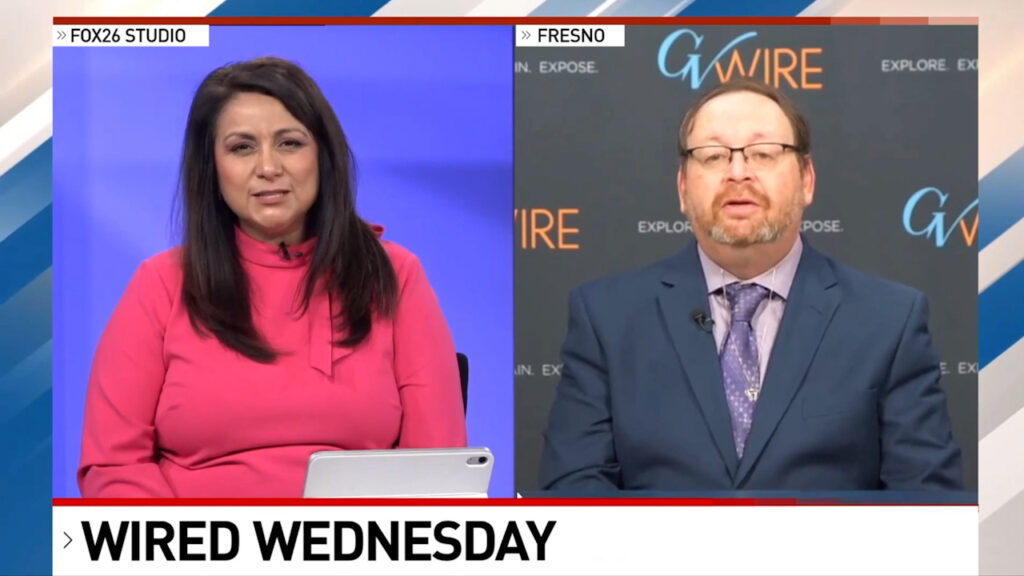California's new mandatory water conservation rules face criticism for being weaker than expected, impacting urban water suppliers. (CalMatters/Miguel Gutierrez Jr.)

- California's new water conservation rules aim to save enough water by 2050 to supply the state for a year, despite being weaker than expected.
- The State Water Board requires 405 urban water suppliers to meet adjusted, reduced water budgets considering regional factors such as climate and livestock ownership.
- The revised California water conservation proposal, despite criticism, is projected to cost $4.7 billion by 2050, with estimated savings of $6.2 billion.
Share
|
Getting your Trinity Audio player ready...
|
Despite California’s perpetual struggles with water shortages, state regulators today adopted mandatory conservation measures that are substantially weaker and save less water than they originally planned.

Rachel Becker
CalMatters
The rules, years in the making, were mandated by a package of laws that tasked state agencies with making “water conservation a California way of life.” They force 405 cities and other urban water suppliers serving about 95% of Californians to meet individualized water budgets that decline over time.
The regulations, adopted unanimously by the State Water Resources Control Board today, usher in a new phase of mandatory conservation for California. They set long-term targets for water use that aim to account for myriad regional differences, from climate to ownership of llamas and other livestock.
The water board’s initial proposal — unveiled last year and estimated to cost $13.5 billion at the time — faced an onslaught of criticism from water suppliers and state analysts who called the rules too costly and difficult to achieve. In March, the state water agency revised its proposal to delay enforcement of the conservation targets and extend the timeline for tightening the water budgets based on outdoor residential use.
The Cost of Compliance: A Burden on Ratepayers?
Individual residents won’t be regulated — only suppliers, who must meet their conservation targets or face fines or other penalties. The costs of complying through 2050 are now estimated at $4.7 billion — which is largely expected to be passed onto ratepayers — but water agencies and their customers will also save about $6.2 billion, in large part from buying less water, according to the agency’s analysis.
Water board staff estimate that through 2040 the measures will save 1.7 million acre feet — enough to supply almost half the state’s population for a year. That’s about 73% less than the earlier proposal, which would have saved 6.3 million acre feet through 2040, staff told CalMatters. Through 2050, the savings could reach about 3.9 million acre-feet — more than a year’s supply for the state’s entire population.
Related Story: Sacramento Bee Accused of Mangling the Facts About Fish Caught in Pumps
Mixed Reactions to the New Regulations
Local water providers told the board that the targets will still be difficult to meet, and warned that the costs could hit low- and fixed-income members of their communities especially hard. They urged the board to provide more technical assistance and funding. Still, many applauded the changes, which they said will soften impacts to customers and communities.
“Water suppliers will need to develop and implement new programs that require long-term customer behavior change and significant investments,” Chelsea Haines of the Association of California Water Agencies, which represents more than 450 public agencies, told CalMatters. “It’s an unprecedented approach that will require a level of commitment that we’ve never seen before.”
But environmental groups and lawmakers say the weakened rules reduce and delay the water conservation that the drought-plagued state needs.
“Failing to prepare is preparing to fail,” said Heather Cooley, director of research at the Pacific Institute, a global water think-tank. “While surface reservoirs are full now, I think there’s a tendency to forget about water scarcity and drought.”
The new rules are “an unprecedented approach that will require a level of commitment that we’ve never seen before.”
CHELSEA HAINES, ASSOCIATION OF CALIFORNIA WATER AGENCIES
The authors of the bills that required mandatory conservation rules — former state Sen. Bob Hertzberg and Assemblymember Laura Friedman from Burbank — said in a March opinion piece that the water board’s changes “trample on the hard-won work that’s been done so far by allowing water utilities until 2035 or later to implement meaningful reductions.”
“The State Water Resources Control Board has decided to kick the can of California’s water future down the road at a time when we can least afford such inaction,” Friedman told CalMatters after the vote, adding that California must invest more in water efficiency or be forced to spend billions on wastewater recycling and desalination.
Water board Chairman Joaquin Esquivel said “this is not a perfect regulation. We can never have a perfect regulation. But it is a significant one and moves us into a direction here into the future that we can all be proud of — and that is nation-leading.”
“The arc of conservation in this state has been an incredible one. Californians know that conservation is critical,” he said during the meeting. “What this creates is really a floor. And importantly, it’s not a policy in isolation.”
Related Story: NASA Satellite Images Tell the Story of California’s Growing Snowpack
Long Road Ahead for the Future of Water Conservation in California
Although the rules were changed multiple times before they came up for a vote today, the fundamental concept remains the same. Each local agency’s water budget is calculated from a combination of standards for indoor and outdoor water use at residences, certain commercial landscapes and losses like leaks. Other factors, such as livestock and recycled water, are also taken into account.
Suppliers must to meet targets through a combination of rebates encouraging thriftier landscapes and appliances, and rate changes penalizing thirstier water users.
A previous, more stringent version of the rule carried the hefty price tag of around $13.5 billion from lost revenues and the costs of funding rebates, infrastructure improvements and other conservation measures. Benefits from having to buy less water or scrounge for expensive new supplies were tallied around $15.6 billion.
At the time, the state’s Legislative Analyst questioned whether the costs were truly worth the benefits. “These doubts are particularly worrisome given we find that suppliers will face notable challenges complying with these requirements,” a January report said.
But water board staff told CalMatters that the staggering costs and elevated benefits were in part due to an accounting error. Combined with policy changes and new data, the latest cost estimate is about $4.7 billion, while the benefits will drop to about $6.2 billion.
“Failing to prepare is preparing to fail…While surface reservoirs are full now, I think there’s a tendency to forget about water scarcity and drought.”
HEATHER COOLEY, THE PACIFIC INSTITUTE
Water regulators revised the proposal to delay enforcement of the conservation targets by two years, until 2027, and extend the deadline for ramping down outdoor water use by five years, starting in 2035.
The rules also provide alternatives for the water suppliers that must make substantial cuts. Those required to reduce use by more than 20%, and who serve communities with household incomes below the state median, could cut use by only 1% per year and still comply, provided they meet other requirements. Those facing cuts of more than 30% could cut use by only 2% per year.
Related Story: California Water Wars Continue Despite Now Healthy H20 Supply
More than a third of suppliers serving about 42% of the state’s population will not need to change their water use to meet the 2035 standards — up from 18% under a previous version, according to state data. And 31% serving about 12.5 million people will be able to continue their current practices through 2040.
Gov. Gavin Newsom has called for Californians in cities and towns to cut water use by about 500,000 acre-feet a year starting by 2030. Under the new rules, Californians are expected to be saving about 235,000 acre-feet of water a year 20 years later, in 2050.
But a water board analysis reported that, combined with current conservation levels and other efforts, the new rules are “estimated to save levels of water consistent with (Newsom’s) goal.”
About the Author
Rachel Becker is a journalist reporting on California’s complex water challenges and water policy issues for CalMatters. She’s covered drought, water standoffs, groundwater depletion, water quality and the world’s biggest dam removal.
About CalMatters
CalMatters is a nonprofit, nonpartisan newsroom committed to explaining California policy and politics.



















